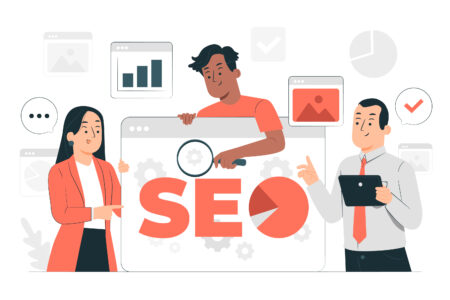5 minutes read

In the highly competitive world of the internet marketplace, improving your visibility amongst your target audience is critical. According to statistics, search engine giant Google handles more than 2 trillion searches every year – that translates to an average of at least 5.48 billion searches daily.
Making your website visible gives you a better chance of turning a percentage of internet searchers into your potential customers. Research indicates most internet users rarely go beyond the first page of search results before they redo a search using a different key phrase. More importantly, data suggests appearing in the first page of search results improves audience perception towards your business. Internet users perceive websites on the first page of SERPs to be more trustworthy and authoritative than websites in succeeding pages, which increases the importance of being on the first page of Google for searches relevant to your products and/or services.
To achieve better visibility in search engine results pages, it is essential to optimise your website for search. While paid advertising works, it is expensive to run a campaign 24 hours a day, 7 days a week. Done correctly, SEO provides a better return on investment over time, as it allows your website to stay on the first page of search results pages consistently, without regularly siphoning resources off your profit margin.
The Elements of an SEO Campaign
An SEO campaign is divided into two general categories: on-page and off-page optimisation. In this three-part series, we will take a closer look at the aspects that comprise these two categories, as well as the strategies that can be taken to improve website rankings.
On-page Optimisation
On-page optimisation concentrates on improving aspects within a website that Google considers as essential signals towards helping create a better search experience.
Keywords
Keywords serve as the foundation of a properly optimised page. Web users start their search with specific key phrases that are relevant to their query. Professional SEO specialists can do in-depth research on your target industry and identify the best keywords upon which to build your campaign. This aspect of search optimisation involves developing a cluster of keywords that will allow your website to appear on the first page as well as bring in qualified leads.
Site Structure
A website is essentially a network that contains various bits and pieces of information. For Google to understand what your website is about, it must be able to crawl your website comprehensively. When a website has a clean and organised structure, search engines find it easier to collect information and send it back to their search engine index for ranking.
Internal linking that is organic, relevant, and unique can also significantly affect the ranking of a website. For best practices, make sure to avoid repetition in your contextual linking by using different phrases that describe your company, practice, brand, services and/or products when linking to other pages within your website.
UX
User interaction with the digital interface of your website determines whether or not a user will take further action down the purchasing funnel. A website that is difficult to understand and navigate can turn off users, consequently reducing your chances of conversion. Your website layout and online content should provide value to your target audience. Enriching the user experience with a regularly updated blog, an informative FAQ page, or a live chat feature can help ensure that visitors stay on your website.
Optimising for mobile devices
In recent years, mobile devices such as phones and tablets have increased their search market share, as more people make use of search while on the go. Google themselves have stated that it is processing more queries from mobile devices than computers across 10 national markets, including Japan and the United States.
The Middle East and Africa region will likely follow suit, considering the fact that more than 606 million people in the regional market have mobile phones as of 2015. UAE stands as the most concentrated market in the region, with approximately 80.6 per cent of the population owning a mobile phone.
That is why it is critical for any business with a website to optimise for mobile search. Making your brand visible in both desktop and mobile devices helps you maximise your reach. Key to this is using a responsive website design that can react and adjust the elements of the website according to the various screen sizes in the market today. A mobile-friendly website is often favoured by Google than those that are not properly optimized.
Make sure your follow these initial steps, and you are well on your way to having a website that is ready to take over the first page of Google SERPs.Facebook



 5 min read
5 min read



